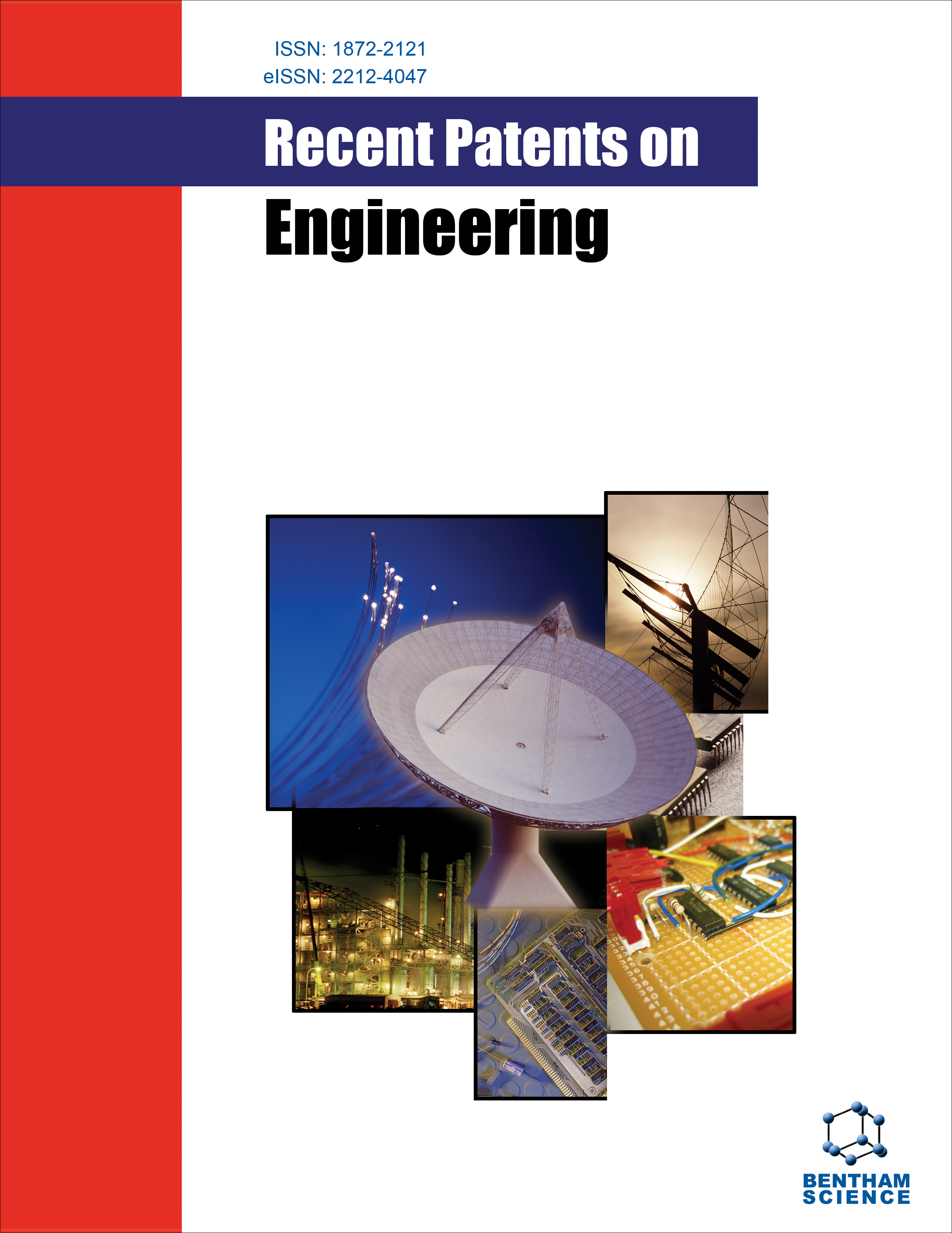- Home
- A-Z Publications
- Recent Patents on Engineering
- Previous Issues
- Volume 17, Issue 5, 2023
Recent Patents on Engineering - Volume 17, Issue 5, 2023
Volume 17, Issue 5, 2023
-
-
An Arduino System for Collecting the Garbage in A Segregated Manner
More LessGarbage collection and segregation are among the biggest problems in today's world across the globe. This work proposed a System that helps clean waste and eases people in daily life. This system, proposed by Swachh Bharat Abhiyan, is an intelligent waste segregator bin embedded with many applications. The system relies on an "Ultrasonic sensor, calorimetric sensor, LED, Arduino, programming language and some har Read More
-
-
-
Recent Methods and Challenges in Brain Tumor Detection Using Medical Image Processing
More LessAuthors: Sai Y. Kandimalla, Dhara Mohana Vamsi, Samudrala Bhavani and Manikandan V.M.A brain tumour is described by the presence of abnormal cells in the brain's tissues. Brain tumours can be benign (not cancerous) or malignant (cancerous). The malignant brain tumour is one of the leading and common cancers in the world. There are two types of tumours, primary tumours that develop in the brain and secondary tumours that start in another region of the body and then spread to the brain. The precise ident Read More
-
-
-
Recent Patents on 3D Printing Technology in Artificial Bone Printing Devices, Materials, and Related Applications
More LessAuthors: Zhaolong Li and Qinghai WangBackground: 3D printing is a kind of rapid prototyping technology. It is a digital model file-based technology that uses powdered metals, plastics, and other bond able materials to construct objects by stacking them layer by layer. In recent years, 3D printed artificial bones have been widely used for repairing or replacing damaged bones. Therefore, the application of 3d printing technology in the field of orthopedics has attra Read More
-
-
-
Recent Advances in Jigging Used for Mineral Separation
More LessAuthors: Yinghua Chen, Jie Tang, Haisheng Li, Jukai Chen, Zhe Cui and Ziyin XuBackground: As a kind of non-renewable natural resource, mineral resources are the important material basis of social development. Mineral resources mined need to be sorted and processed to improve product quality and utilization rate. As an important mineral separation process, jigging has obvious technical advantages and has been widely used in mineral separation technical field. Objective: In this paper, jig relat Read More
-
-
-
Research on Incentive Mechanism and Credit Behavior of University Scientific Research Based on Evolutionary Game
More LessAuthors: Liu Xuwang, Zhang Yujie and Zhang ZhengxuanBackground: Colleges and universities play an important role in national scientific and technological innovation, and research outputs are the comprehensive embodiment of their strength. There is a study value in determining how to energize the researchers and create a healthy atmosphere for them. Objective: On the premise of the bounded rationality of researchers, this paper first briefly describes some practi Read More
-
-
-
Location Tracking Mechanisms for Dementia Patients
More LessAuthors: Parul Arora and Suman DeswalBackground: Dementia causes a slow decline in the cognitive impairing abilities in the behavior of the elders. This suppresses the elders from living independently due to their wandering tendencies. To reduce any kind of harm to such patients, consistent supervision is required by the caretaker. The existing location tracking methods consume high energy to provide an accurate location. Introduction: Some systems have been de Read More
-
-
-
A Sequential Pattern-Based Method for Mining Technological Context and Developing R&D Strategies for the Cloud Computing Industry
More LessAuthors: Jia-Yen Huang and Pei-Hua ZhuangAims: Cloud computing has been a hot topic in recent years, yet its technology trend is rarely comprehensively studied in peer-reviewed publications. Owing to a great number of professional and technical terms and the increasing volume of technical data presented in patents, it is difficult to analytically identify the timeframe of technological development. Methods: To remedy this problem, this study uses a sequenti Read More
-
-
-
Trajectory Tracking Control for Small Electric Sweeper Based on the Hybrid Control Method
More LessAuthors: Xiaowei Li, Qing Li and Junhui ZhangBackground: Trajectory tracking, one of the critical automatic driving technologies, is significant for the operation of small electric sweepers working in complex road environments, such as campuses and closed parks. Methods: This paper investigates a trajectory tracking control system for small self-driving electric sweepers on roads with different operating speed requirements. A hybrid control method combining sliding Read More
-
Volumes & issues
-
Volume 19 (2025)
-
Volume 18 (2024)
-
Volume 17 (2023)
-
Volume 16 (2022)
-
Volume 15 (2021)
-
Volume 14 (2020)
-
Volume 13 (2019)
-
Volume 12 (2018)
-
Volume 11 (2017)
-
Volume 10 (2016)
-
Volume 9 (2015)
-
Volume 8 (2014)
-
Volume 7 (2013)
-
Volume 6 (2012)
-
Volume 5 (2011)
-
Volume 4 (2010)
-
Volume 3 (2009)
-
Volume 2 (2008)
-
Volume 1 (2007)
Most Read This Month
Article
content/journals/eng
Journal
10
5
false
en


